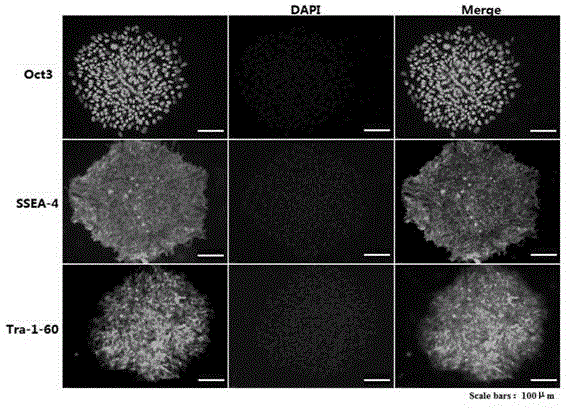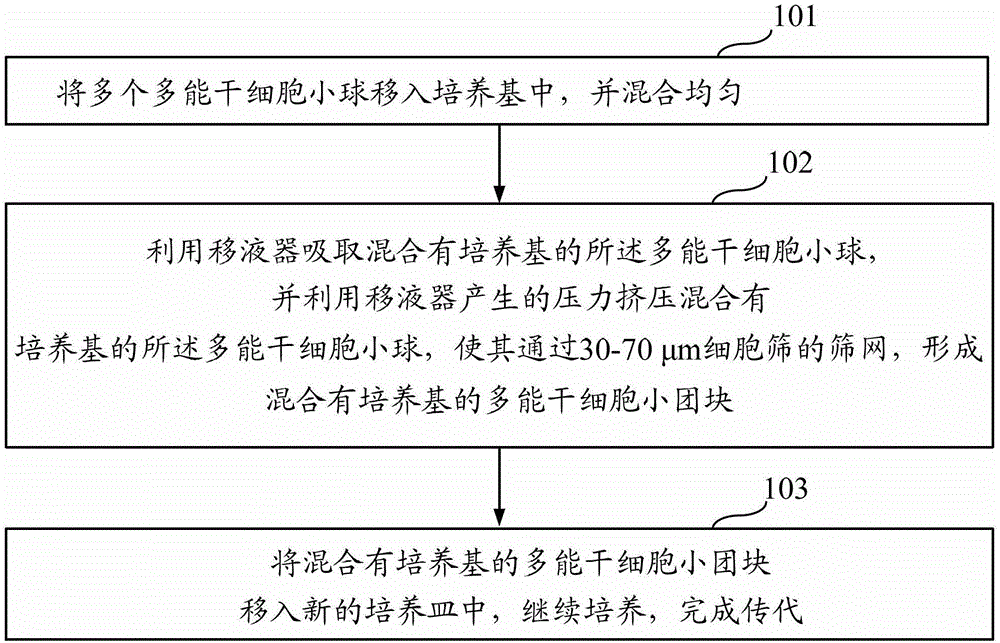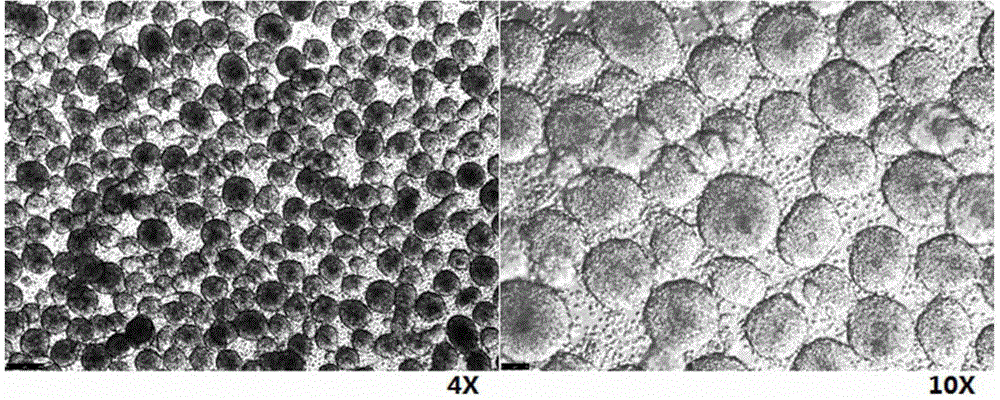Passage method of pluripotent stem cells and application thereof
A technology for pluripotent stem cells and uses, which is applied in the field of subculture of pluripotent stem cells, can solve problems such as not being suitable for subculture of pluripotent stem cells in suspension culture, reducing the feasibility of directed differentiation, and chromosomal variation of pluripotent stem cells, so as to improve the formation of clonal balls ability, preventing mutual aggregation into clusters, and improving the quality of stem cells
- Summary
- Abstract
- Description
- Claims
- Application Information
AI Technical Summary
Problems solved by technology
Method used
Image
Examples
Embodiment 1
[0050] Methods for subculture of pluripotent stem cells, such as figure 1 shown, including the following steps:
[0051] Step 101: moving multiple pluripotent stem cell pellets into the culture medium and mixing them evenly;
[0052] Step 102: Use a pipette to suck up the pluripotent stem cell pellets mixed in the culture medium, and use the pressure generated by the pipette to squeeze the said pluripotent stem cell pellets mixed in the culture medium to pass through a 30-70 μm The sieve of the cell sieve, forming small clumps of pluripotent stem cells mixed with the culture medium;
[0053] Step 103: Transfer the small clumps of pluripotent stem cells mixed in the culture medium into a new culture dish, continue culturing, and complete passage;
[0054]The pluripotent stem cell spheres are spherical aggregates of pluripotent stem cells formed in suspension culture (non-adherent), and the diameter of the pluripotent stem cell spheres is 240±40 μm.
[0055] Compared with existi
Embodiment 2
[0077] The pluripotent stem cells used in the following test examples are human embryonic stem cells BG02.
[0078] The pluripotent stem cells cultured in suspension were passaged using a cell sieve when the average diameter reached 240 μm.
[0079] Step 1: Gently shake the culture dish to make the suspension-cultured pluripotent stem cell pellets gather in the center of the culture dish.
[0080] Step 2: Use a 200 μl pipette gun to suction a small amount of pluripotent stem cell pellets without selection and place them in a well of a 96-well plate.
[0081] Step 3: count under a microscope, and adjust the number of small balls to 70-90.
[0082] Step 4: Transfer the pluripotent stem cell pellets in the small wells to 3 ml of 37°C preheated medium (containing 10 μmol / L Rock inhibitor Y-27632).
[0083] Step 5: Place a cell sieve with a diameter of 40 μm on a clean small tube.
[0084] Step 6: Gently blow and suck the pluripotent stem cell pellet in step 4 with a pipette gun,
PUM
| Property | Measurement | Unit |
|---|---|---|
| Average diameter | aaaaa | aaaaa |
Abstract
Description
Claims
Application Information
 Login to view more
Login to view more - R&D Engineer
- R&D Manager
- IP Professional
- Industry Leading Data Capabilities
- Powerful AI technology
- Patent DNA Extraction
Browse by: Latest US Patents, China's latest patents, Technical Efficacy Thesaurus, Application Domain, Technology Topic.
© 2024 PatSnap. All rights reserved.Legal|Privacy policy|Modern Slavery Act Transparency Statement|Sitemap



